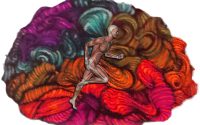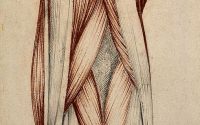Forward Head Posture Alters Autonomic Nervous System Functioning and Cervical Sensorimotor Control
There is a debate on the role of posture on musculoskeletal health. The conventional view is that normal posture with straight cervical spine alignment is important for maintaining efficiency and pain-free movement while another view is that all postures are normal.
Posture can also affect cervical sensorimotor control and the functioning of the autonomic nervous system. Some studies suggested that forward head posture could create biomechanical dysfunction of the spinal column, which will result in an altered joint position that may lead to the distortion of information to the brain. A stable posture, head, and eye movement rely on afferent information from the vestibular, visual, and proprioceptive systems, which converge in the central nervous system.
A study from Egypt published in Gait & Posture investigated the role of forward head posture on Autonomic Nervous System Function and Cervical Sensorimotor Control. The study recruited 80 people with forward head posture (significant anterior head translation as measured by the craniovertebral angle that is greater than 50°). The participants were matched with 80 normal posture participants with similar age, sex, and BMI.
The two groups were tested with Sensorimotor control variables:
- Head and eye movement control as measured using the smooth pursuit neck torsion test (SPNT), which measured the disturbances in eye movement control.
- Cervical joint position sense testing, via left and right rotation repositioning accuracy.
- Postural stability, as measured using a dynamic balance test
The autonomic nervous system function was tested using the skin sympathetic response (SSR), where an EMG was used to measure the skin response of the hand to a given stimulus.
Statistical analysis showed that there were significant differences between the forward head posture group and normal posture group for all the measured sensorimotor variables. In other words, participants with forward head posture showed a decrease in eye movement control, greater error in cervical joint testing and less stability.
There was also a significant difference in the autonomic nervous function parameter, including surface skin response amplitude, but there was no significant difference for skin response Latency.
The craniovertebral angle significantly correlated with all measured variables.
The authors hyporthesised that normal cervical sagittal alignment is essential for sensorimotor control. Normal afferent information from neck proprioception, vestibular system, and vision contribute to postural control, orientation, and equilibrium. Prolonged forward head posture can increase the load on muscles and tissues in the upper cervical. These loads might decrease the sensitivity of muscle spindles and mechanoreceptors in soft tissue structures of the spine that alter sensory input from the cervical spine and contribute to proprioceptive deficits or dysafferentation.
Cervical sagittal alignment has essential in maintaining the normal function of the autonomic nervous system. A normal cervical lordosis may improve the parasympathetic activation and decrease the overall sympathetic tone, decreasing the adverse mechanical tension acting on the brainstem, cranial nerves. In addition, optimal lordosis and head position would reduce longitudinal stress and strain on the neural elements.


